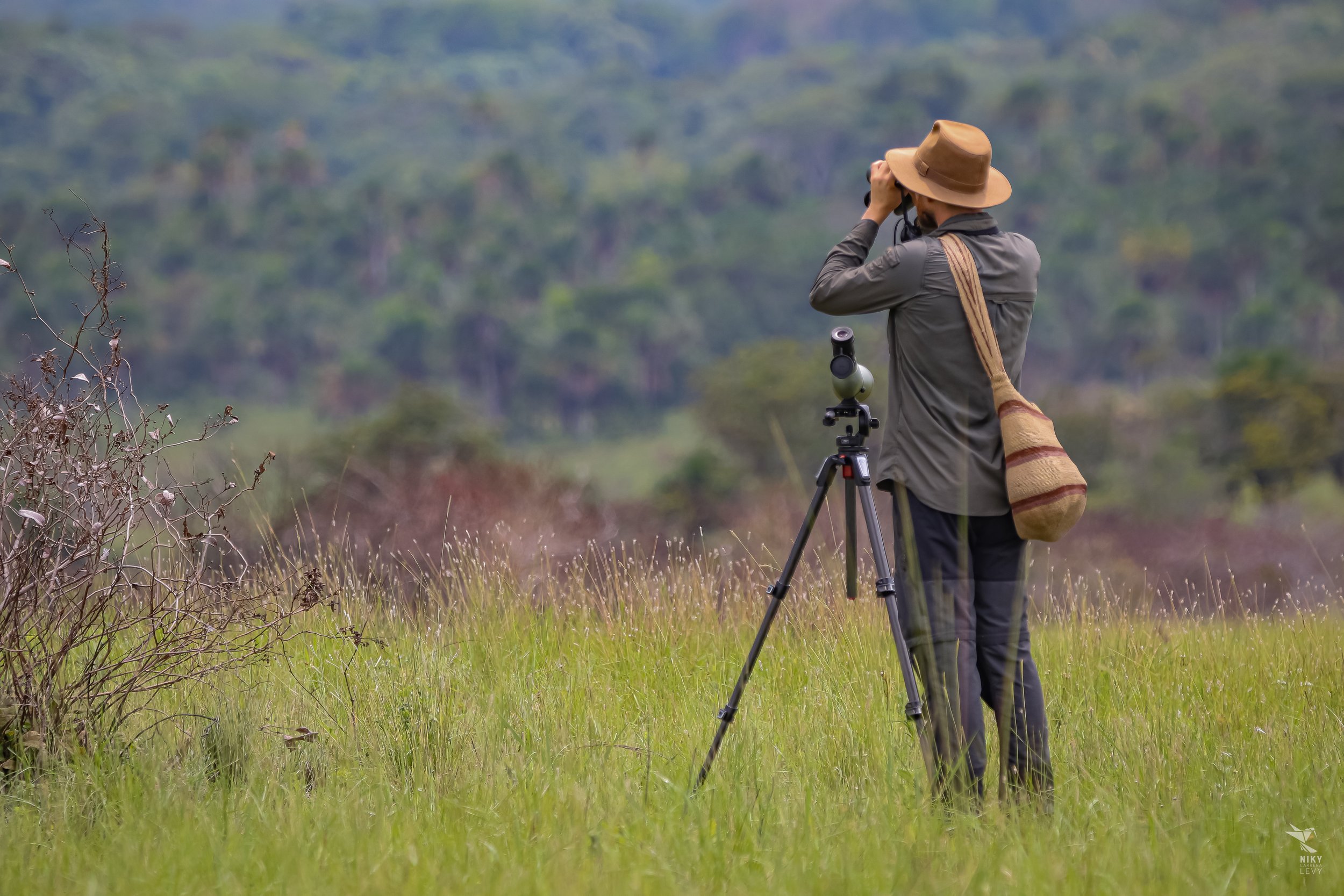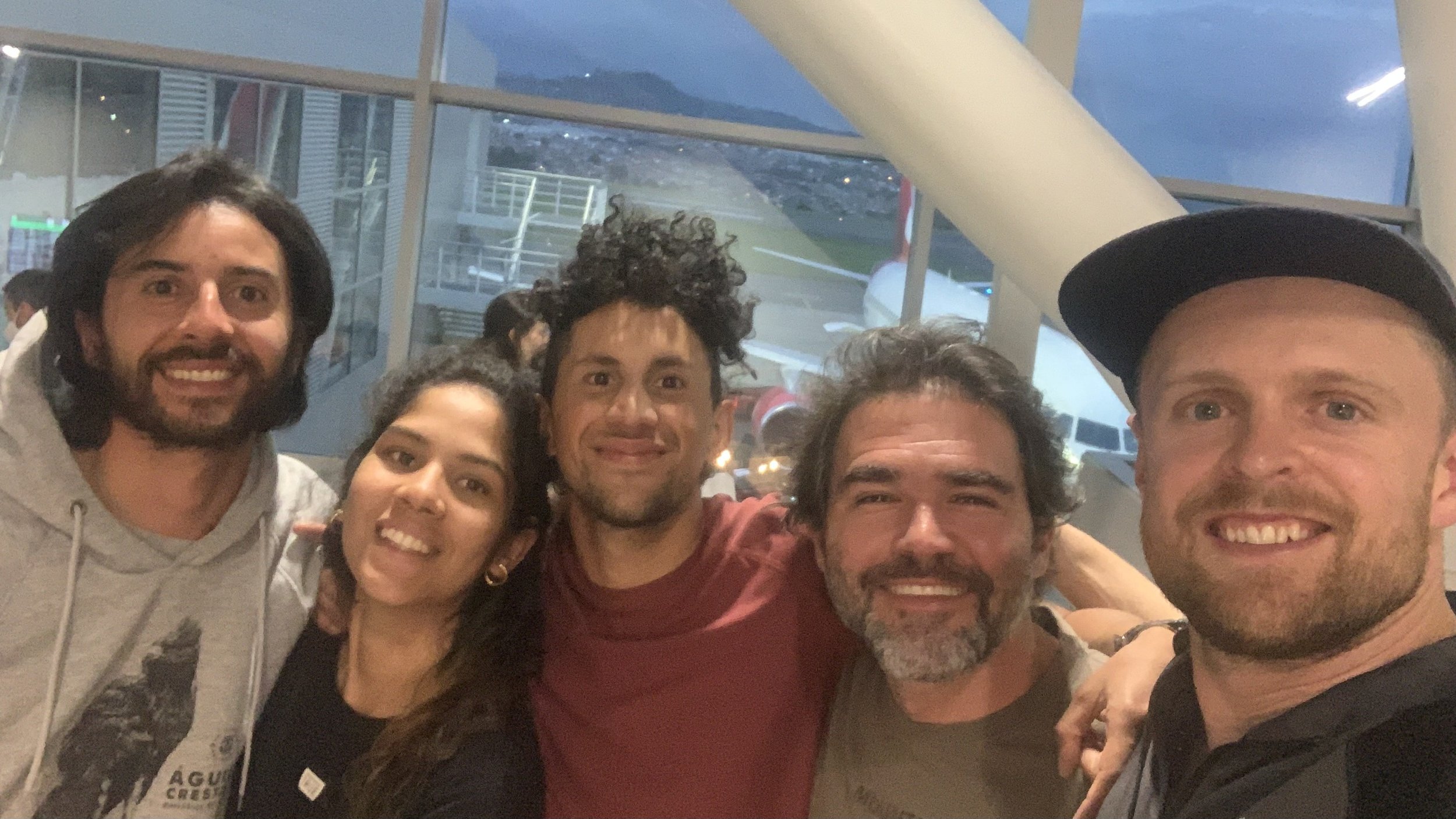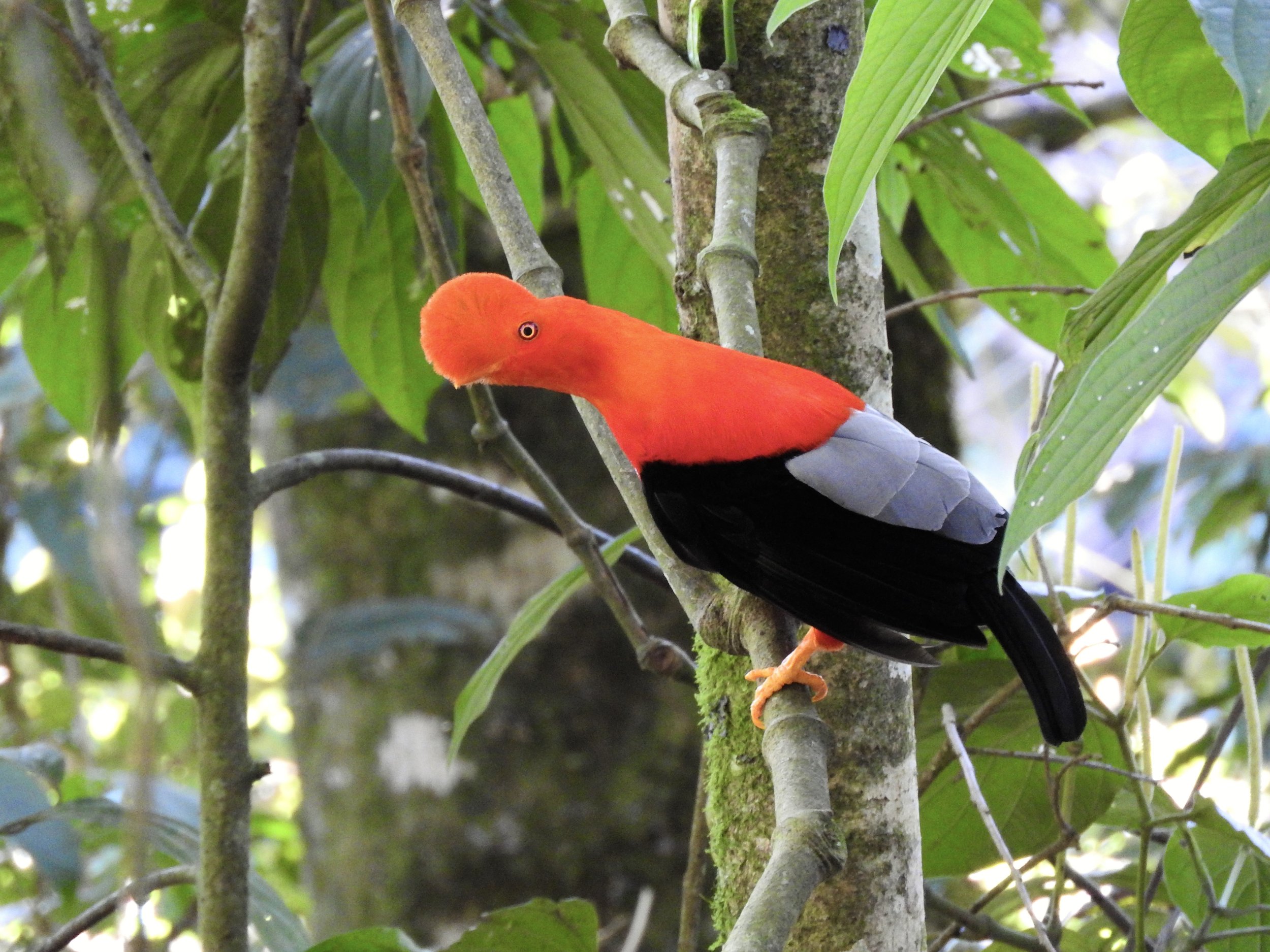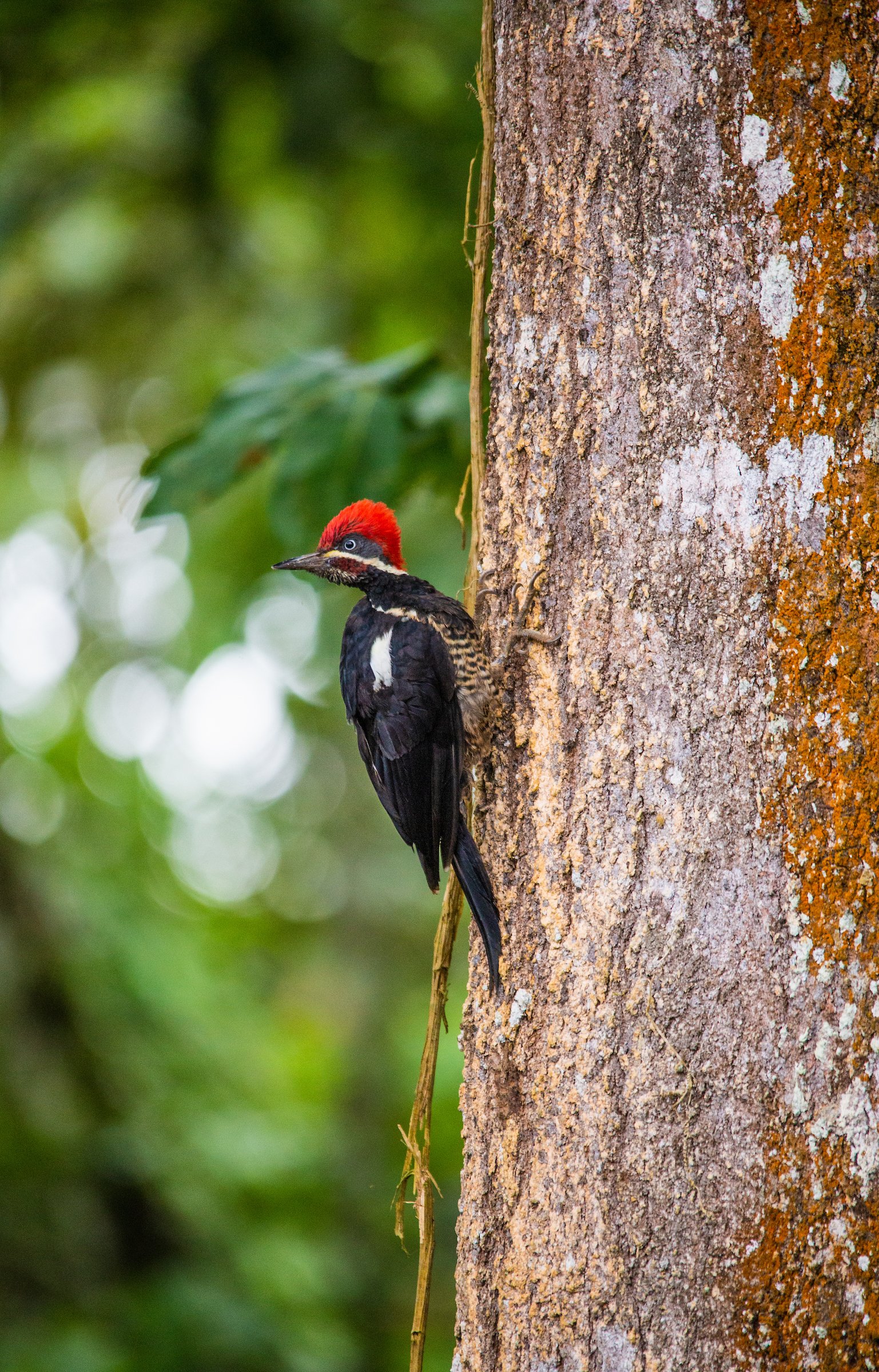How to Prepare for a Birding Trip to Colombia
Birding in Caquetá, Colombia (Photo: Jorge Muñoz)
Our host, Chris is an avid Colombia explorer who has birded in every one of the country’s 32 departments. Here are his top tips on how to prepare for a birding trip to Colombia.
As the most bird-diverse country on earth, Colombia is an increasingly popular international birding destination. Bird-lovers from across the globe are flocking (pun very much intended) to Colombia to take advantage of its incredible biodiversity, range of habitats, wealth of range-restricted and endemic species, and relative affordability.
But how can you prepare for your birding trip to Colombia? What books can you buy to brush up on Colombian avifauna? What do you need to pack? And when should you visit?
When to travel to Colombia for birding
Due to Colombia's proximity to the equator, the climate is generally tropical without any real change of seasons. Temperatures are relatively consistent. However, rainfall can vary wildly throughout the year. Although you can enjoy incredible birding in Colombia year-round, you can lose a lot of birding time to heavy rain at the height of the rainy season.
Suppose you are planning to bird in the Andean region. In that case, it's probably best to avoid the rainy season of April-May and September-October (be advised, however, that this rainy season is increasingly variable, so there are no guarantees). Generally speaking, the period between November-March and June-August are good birding months in the Andean region - it's drier (particularly between December-February), so there's less chance of losing birding time due to heavy rain.
The best birding is undoubtedly during the dry season between December-March if you're heading to the Eastern Plains region. In these seasonally-flooded grasslands, there is a far more pronounced wet and dry season, and if you visit in January or February, there's a good chance there won't be a single drop of rain. While this intense dryness and heat can be a tad oppressive at times, it makes for incredible birding and wildlife watching, as all the wildlife clusters around the rapidly-diminishing watering holes and lakes.
Birding in the Colombian grasslands is often better in the dry season (note the broad-brimmed hat; see below for packing tips!)
This also holds for popular Amazonian birding locations like Inirida and Mitú - both see plenty of rain throughout the year. Still, there are far fewer rainy days between December and March. Conversely, it is drier between June and September in the more southerly reaches of the Colombian Amazon around Leticia. This is also when the rivers recede, exposing sandy beaches with scrubby undergrowth, ideal habitat for some Colombian rarities specializing in river islands.
There's really no wrong time to bird in Colombia, but picking the drier months for your destination is a good idea if you want to maximize your time in the field.
What to pack for birding in Colombia
Packing for a birding trip to Colombia is reasonably straightforward if you've ever birded in the tropics before.
Firstly, bring a few sets of lightweight, quick-drying outdoor clothing. I prefer long-sleeved shirts; you can always roll the sleeves up if you're hot, but you have added protection from the sun and insects. Throw in a comfortable evening outfit, and you're all set. One item I never skimp on when I'm packing for a birding trip to Colombia is extra socks. There's nothing worse than having to put on a pair of wet socks in the morning. So consider replacing that fifth shirt that you'll never wear with a few extra socks.
Secondly, waterproof clothing is vital, even in the so-called "dry" seasons. Pack a good waterproof jacket and lightweight rain poncho. Consider bringing a small umbrella (it can be much more comfortable birding with an umbrella in streamy, humid climates than a jacket). Dry bags are also worth considering - for birding boat trips, for instance, if you get caught in a heavy shower and want to protect your gear or dry clothes.
Additionally, don't underestimate the cold in Colombia! Many people arrive in Bogota expecting a tropical climate and are surprised that the Colombian capital can get pretty chilly in the evenings. The same goes for many lodges in the Andean regions and sometimes in the Amazon at night. Bring a legitimate cold-weather outfit if your itinerary includes birding in the high-Andean paramos. If not, one good fleece or down jacket should suffice.
Birding in the high Andes can be very cold and wet, as you can see from our outfits while we film The Birders Show in Caldas region
A hat is also essential: wide-brimmed if you're prone to sunburn and will be spending lots of time in open areas like the plains or on boats. If not, then a cap should be fine.
For footwear, lightweight hiking shoes should be fine in most places. A lot of Amazon and Pacific locations are best birded in rubber boots (deep puddles and as added protection against snakes), but unless you have a pair of these boots that you’re especially attached to, it’s easier and cheaper to buy a pair in Colombia when you arrive. Rubber boots are easily found in almost all rural areas.
Remember that some birding tour itineraries move at breakneck speed from location to location, leaving little time for laundry. So perhaps consider throwing in one extra complete outfit if you won't have time to wash any clothes. Your tour mates will thank you after days in the jungle!
In terms of electrical goods and medicaments, it's all fairly straightforward as international travel goes. Don't forget mosquito repellent (ideally natural, DEET is awful stuff and can even damage binocular lens coatings), waterproof sunscreen, and spare contact lenses or glasses if you wear them (finding replacements in rural Colombia will be practically impossible).
Colombian plug types are A and B, while the standard voltage is 110 V and the standard frequency is 60 Hz. So remember an adapter if your country operates on a different plug type. Unfortunately, these can also be hard to find once you're out of the airport.
I don't think you need me to remind you to bring binoculars, a scope, or a camera!
How to study for a birding trip to Colombia
Realistically, you're never going to arrive in a country with the avian diversity of Colombia with a broad and detailed knowledge of the avifauna, especially if it's your first trip. However, assuming you want to have a good base knowledge of the birds you're going to see, there are some excellent ways you can brush up on Colombian birds before your trip.
The new Birds of Colombia guide by Steven Hilty is probably the most thorough and up-to-date guide to Colombian birds that's ever been published. However, it's on the heavy side for a field guide and may not be ideal for lugging around all day (especially if you bird with a heavy camera or scope). As a result, I've always seen the Hilty guide as the "hotel" bird book - the reference guide you consult in the evening after a day of birding or use at home before your trip to study your target birds.
‘Birds of Colombia’ by Steven L. Hilty
For a proper "field" guide, I would recommend purchasing either Miles McMullan's Field Guide to the Birds of Colombia or Fernando Ayerbe's An Illustrated Field Guide to the Birds of Columbia. Both of these books are excellent ID resources for birding in Colombia. Each has its strengths - McMullan's book has more text and gives more detailed habitat and behavior descriptions for each species, while Ayerbe's illustrations of trickier species like flycatchers and woodcreepers are more precise - but you can't go far wrong with either book.
Finally, Merlin has recently been updated to contain a full Colombia' pack' containing over 1,800 species. While I wouldn't recommend the app as your only ID tool in the field, it is an excellent resource for identification. In addition, the database of bird calls is handy when you're trying to nail down a tricky ID in the field. So download the complete Colombia pack if you're traveling to multiple destinations.
If you're planning to bird independently in Colombia
If your birding trip to Colombia isn't through a tour agency, you can do a few additional things to get acquainted with the country and plan your trip.
Get hold of a copy of Birdwatching in Colombia by Jurgen Beckers and Pablo Florez. Although it was published in 2013 and doesn't have all the new birding locations, it's an excellent resource for planning an independent birding trip to Colombia, with detailed information about the best places to spot a range of species in all of Colombia's ecoregion.
Let your bank know you're traveling. A lot of rural Colombia still exists on a cash economy, so the last thing you need is to attempt to take out cash on Day 1, and for your bank to cancel your card: you'll need it!
Plan your route ahead of time, especially if time is limited. And always allow a few extra days for unexpected delays. Colombia is a mountainous country, and many roads can become tricky after heavy rain, so delays are always possible. Don't attempt a breakneck run through the country in 2 weeks. Or, if you do, prepare yourself for some delays along the way.
Know when you need a guide - there are good birding spots in Colombia that can be explored entirely independently, but others require you to go with a local guide. This is important to the growth of birding as a viable economic alternative in rural Colombia, so please support local guides whenever you can.
‘Birdwatching in Colombia’ by Jurgen Beckers and Pablo Florez
Finally, don't forget to get really excited!
Colombia still has many untouched, rural regions with little access to modernity, but this is a growing and developing country with a modern capital and many large cities. So you can get most things in Bogota, Medellin, Cali, or Santa Marta. So don't sweat it if you forget something listed here; this blog is just to help smooth the process of planning a birding trip to Colombia.
The most important thing, after all, is to enjoy every minute of birding in the world's birdiest country! That's what it's all about. So pore over your new bird book, listen to calls on Merlin, watch some episodes of The Birders Show and The Birders documentary, and get really, really excited!
Can you tell how excited we are to go birding in Colombia?!












